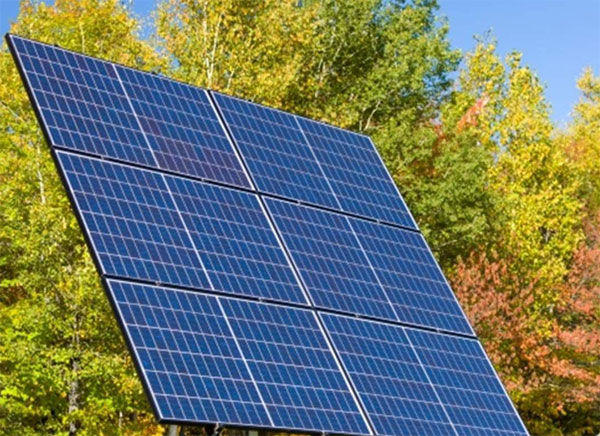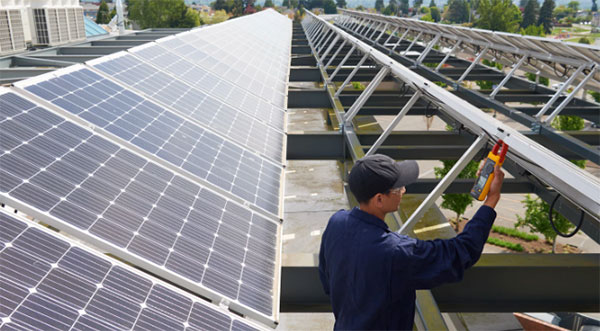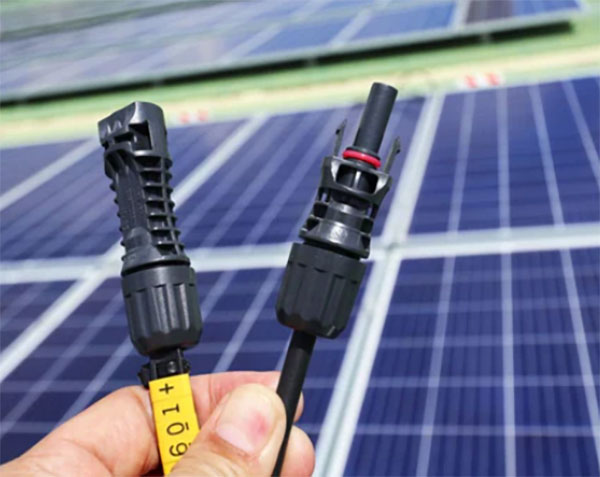Description
A Grade solar panels offer higher efficiency and durability than B Grade, which are more affordable but less efficient.

Defining A Grade and B Grade Solar Panels
Explanation of A Grade Solar Panels
A Grade solar panels represent the pinnacle of solar technology and manufacturing quality. These panels are characterized by
high efficiency rates, typically exceeding 20%. They are manufactured with
few to no visual defects and demonstrate
optimal electrical performance. The materials used in A Grade panels, such as high-purity silicon, contribute to their
longer lifespan, often around 25 years or more. Their construction ensures
minimal power degradation over time, usually less than 0.5% per year.
A key feature of A Grade panels is their
excellent performance under low light conditions and
high temperature tolerance. This makes them suitable for a variety of climates, maximizing energy production. The uniformity in color and appearance is a testament to the
strict quality control measures in place during their manufacturing. These panels are generally backed by
comprehensive warranties from reputable manufacturers, reflecting confidence in their longevity and performance.
Explanation of B Grade Solar Panels
B Grade solar panels, while still functional, are a step down in quality compared to A Grade panels. They often have
minor cosmetic imperfections, such as color variations or micro-cracks, which do not significantly impact their performance. The efficiency rates of B Grade panels are typically lower, ranging from 15% to 17%.
These panels may have
higher degradation rates than their A Grade counterparts, potentially around 1% per year. The lower cost of B Grade panels is a reflection of these
quality differences, making them a budget-friendly option. They are often used in large-scale installations where
cost-effectiveness is a priority over peak performance.
The lifespan of B Grade solar panels can be shorter, around 20 years. They are suitable for applications where high efficiency is not the primary concern. However, it's important to note that the
warranties offered for B Grade panels might be less comprehensive than those for A Grade panels, reflecting the lower initial investment and expected longevity.

Comparative Analysis of Efficiency and Performance
Efficiency Comparison
| Feature |
A Grade Solar Panels |
B Grade Solar Panels |
| Efficiency Rate |
20% and above |
15% to 17% |
| Power Degradation |
Less than 0.5% per year |
Around 1% per year |
| Lifespan |
25 years or more |
Around 20 years |
| Material Quality |
High-purity silicon |
Lower purity silicon or minor defects |
| Cost Effectiveness |
Higher initial cost, long-term savings |
Lower initial cost, less long-term value |
Efficiency rate is a critical factor in solar panel performance. A Grade solar panels, with their higher efficiency rates, convert more sunlight into electricity, making them ideal for areas with limited space. B Grade panels, while less efficient, are more cost-effective for larger installations where space is not a constraint.
Performance Under Various Conditions
| Condition |
A Grade Solar Panels |
B Grade Solar Panels |
| Low Light |
Excellent performance |
Moderate performance |
| High Temperature |
High tolerance, minimal efficiency loss |
Reduced efficiency under extreme heat |
| Climate Adaptability |
Suitable for varied climates |
Best in moderate climates |
| Long-term Yield |
Higher energy production over time |
Steady output, but lower than A Grade |
| Warranty and Support |
Comprehensive manufacturer warranties |
Limited warranties |
A Grade solar panels maintain high performance in diverse conditions, including low light and high temperatures, a testament to their
advanced engineering and material quality. B Grade panels, while operational in various conditions, may experience reduced efficiency in extreme weather, impacting their long-term energy yield.

Durability and Lifespan Differences
Expected Lifespan of A Grade vs. B Grade Panels
A Grade solar panels boast a
longer lifespan, often exceeding 25 years. This longevity is attributed to:
- High-quality materials: They utilize top-tier silicon and other durable components.
- Advanced manufacturing: Ensures robustness and resistance to environmental stressors.
- Less degradation: Typically less than 0.5% per year.
In contrast, B Grade solar panels have a slightly shorter lifespan, around 20 years. This is due to:
- Minor material imperfections: These can slightly accelerate degradation.
- Less stringent manufacturing controls: May result in less durability over time.
- Degradation rate: Generally around 1% per year.
Durability Factors and Impact on Performance
Durability of solar panels is influenced by several factors:
- Material Quality: A Grade panels use purer silicon, enhancing their resistance to damage and degradation.
- Environmental Exposure: Panels must withstand weather conditions like heat, cold, and humidity. A Grade panels typically offer better performance in extreme conditions.
- Physical Stress: Resistance to impact and stress, important for areas with harsh weather conditions.
- Maintenance and Upkeep: Regular cleaning and checks can extend lifespan.
The impact of durability on performance includes:
- Consistent Power Output: More durable panels maintain their efficiency for a longer period.
- Reduced Maintenance Costs: Higher durability translates to less frequent repairs or replacements.
- Overall Value: Long-term, durable panels can offer better return on investment despite higher upfront costs.

Cost Considerations
Initial Investment and Long-term Savings
When investing in solar panels, the initial cost can vary significantly between A Grade and B Grade panels:
- A Grade Solar Panels:
- Higher Price Point: Typically, the cost is higher due to superior material quality and manufacturing processes.
- Long-term Efficiency: The higher efficiency rates lead to more energy production, translating into greater savings over time.
- Durability: Longer lifespan and lower degradation rate mean fewer replacement costs.
- B Grade Solar Panels:
- Lower Initial Cost: More affordable due to minor imperfections and slightly lower efficiency.
- Suitable for Large Installations: The reduced cost makes them viable for extensive solar projects where high initial efficiency isn't paramount.
- Shorter Lifespan: Potential for increased costs over time due to earlier replacement needs.
The long-term financial implications are crucial:
- Return on Investment (ROI): A Grade panels often offer a higher ROI due to prolonged efficiency and durability.
- Energy Bills: Higher efficiency panels lead to greater savings on utility bills.
- Maintenance Costs: B Grade panels might require more frequent maintenance or earlier replacement, affecting the overall cost-efficiency.
Price Differences and Their Implications
The price gap between A Grade and B Grade solar panels influences various aspects:
- Budget Allocation: For those with limited budgets, B Grade panels allow access to solar technology without a hefty initial investment.
- Project Scale and Type: Large-scale projects or installations in less critical applications might opt for B Grade to reduce upfront costs.
- Energy Requirements: For high-energy-needs scenarios, A Grade panels' efficiency can be crucial despite the higher cost.

Warranty and Manufacturer Support
Warranty Terms for A Grade vs. B Grade Panels
A Grade Solar Panels typically come with more extensive warranty terms, reflecting their higher quality and reliability. These warranties often cover:
- Performance Guarantee: Often up to 25 years, ensuring that the panels maintain a certain level of efficiency.
- Product Warranty: Ranging from 10 to 12 years, covering defects in materials or workmanship.
In contrast,
B Grade Solar Panels generally have shorter and less comprehensive warranty terms due to their lower initial cost and quality. Their warranties usually include:
- Reduced Duration: Typically around 10 years for performance.
- Limited Coverage: May not include as broad a range of defects or efficiency guarantees.
The difference in warranty terms highlights the manufacturer's confidence in their product's longevity and performance. A longer warranty period offers peace of mind and can be indicative of a better long-term investment.
Manufacturer Support and Services
The level of support and services provided by manufacturers can significantly impact the user experience and long-term satisfaction with the solar panels.
A Grade Panel Manufacturers often provide:
- Extensive Customer Support: Including consultation, installation guidance, and after-sales services.
- Technical Assistance: Help with troubleshooting and resolving issues related to panel performance.
B Grade Panel Manufacturers may offer:
- Basic Support Services: Focused on essential customer service and limited technical assistance.
- Varied Quality of Service: Depending on the manufacturer, support can range from adequate to minimal.
Environmental Impact and Sustainability
Environmental Footprint of A Grade and B Grade Panels
The environmental footprint of solar panels is a crucial aspect of their overall sustainability. Both A Grade and B Grade panels have their specific impacts:
- A Grade Solar Panels:
- Lower Carbon Footprint: Due to higher efficiency, they generate more energy over their lifespan, offsetting the energy used in their production.
- Use of High-Quality Materials: Often involves more energy-intensive processes but results in longer-lasting products.
- Recycling: Easier to recycle due to the purity of materials, reducing environmental impact at the end of their lifespan.
- B Grade Solar Panels:
- Higher Carbon Footprint Per Unit of Energy: Due to lower efficiency, they might require more panels to produce the same amount of energy as A Grade panels.
- Less Energy-Intensive Manufacturing: However, the shorter lifespan and potential for earlier disposal can negate these benefits.
- Recycling Challenges: Minor imperfections in materials can complicate recycling processes.
Understanding the environmental implications of each grade helps in making a more eco-conscious choice.
Sustainability in Manufacturing and Recycling Options
Sustainable practices in the manufacturing and end-of-life treatment of solar panels are vital:
- Manufacturing Process:
- Resource Efficiency: Minimizing waste and using renewable energy sources during production.
- Sustainable Supply Chain: Sourcing materials responsibly and ensuring minimal environmental harm.
- Recycling Options:
- End-of-Life Management: Both types of panels can be recycled, but A Grade panels often offer a cleaner recycling process.
- Recovery of Materials: Efficient recycling helps in recovering valuable materials like silicon, silver, and aluminum.
Important Considerations:
- Long-Term Environmental Impact: Choosing panels with a lower overall environmental impact over their entire lifecycle.
- Contribution to Sustainable Energy Goals: Solar panels, regardless of grade, play a significant role in reducing reliance on fossil fuels.








